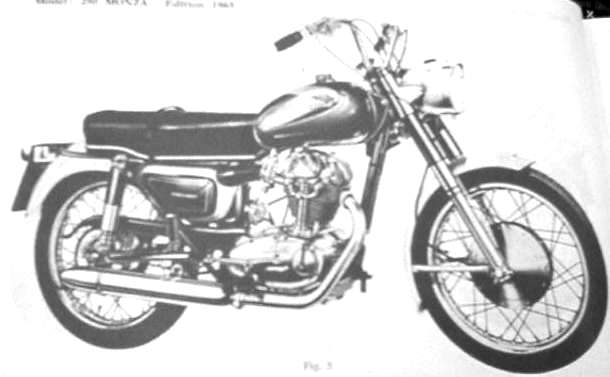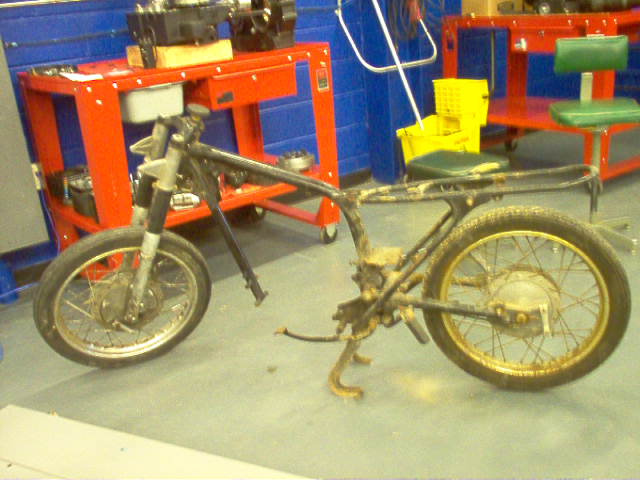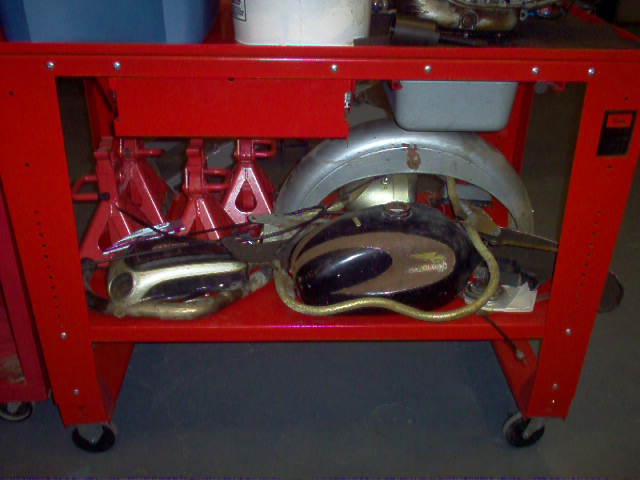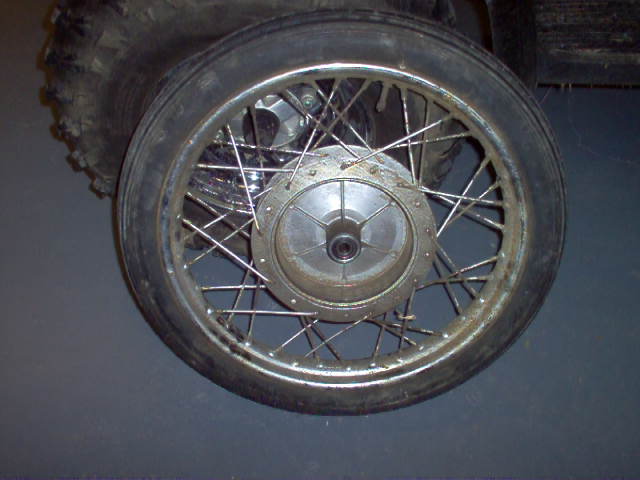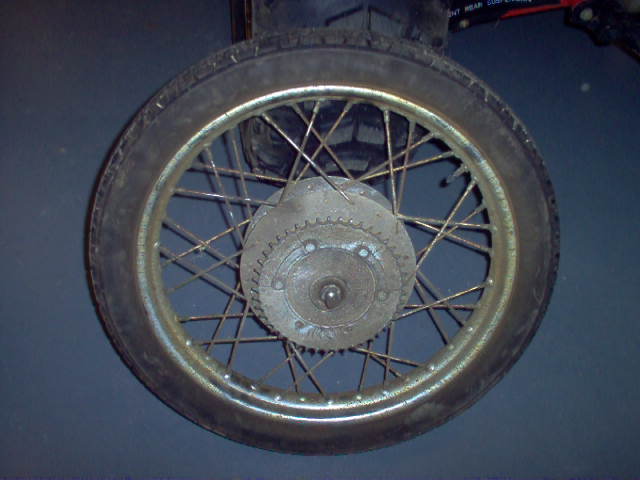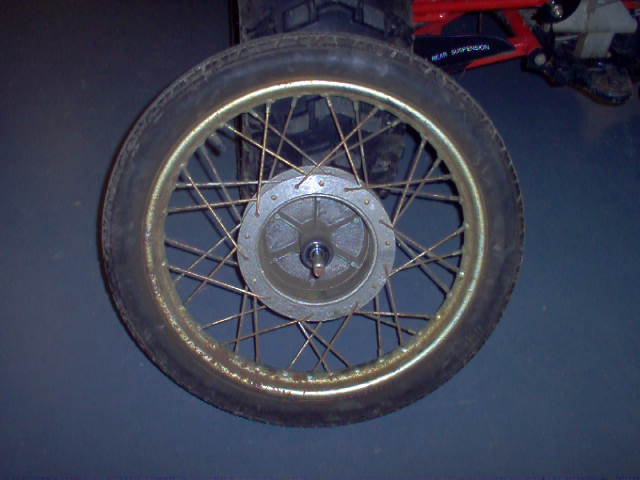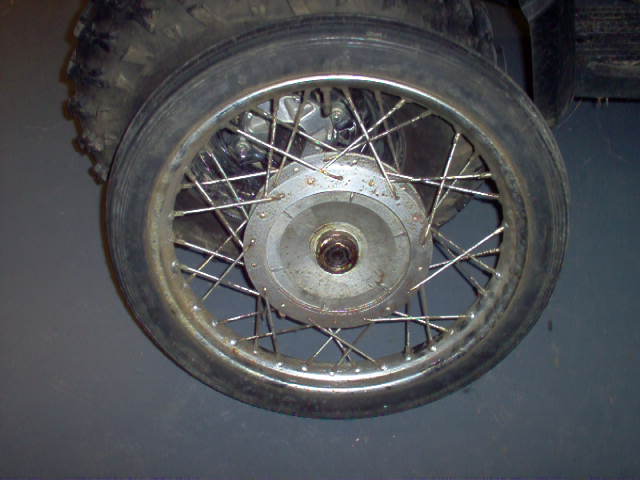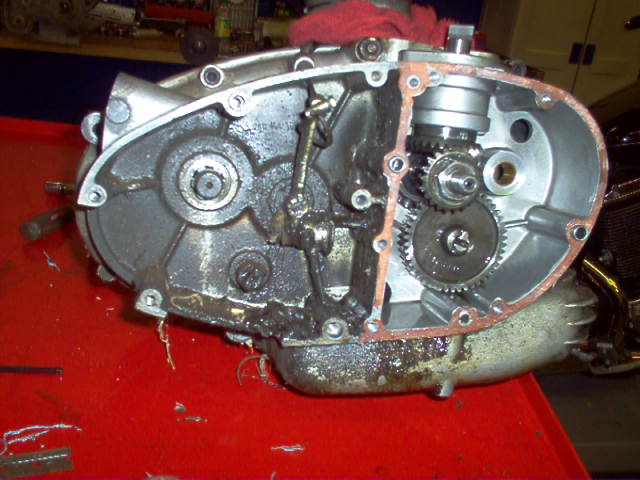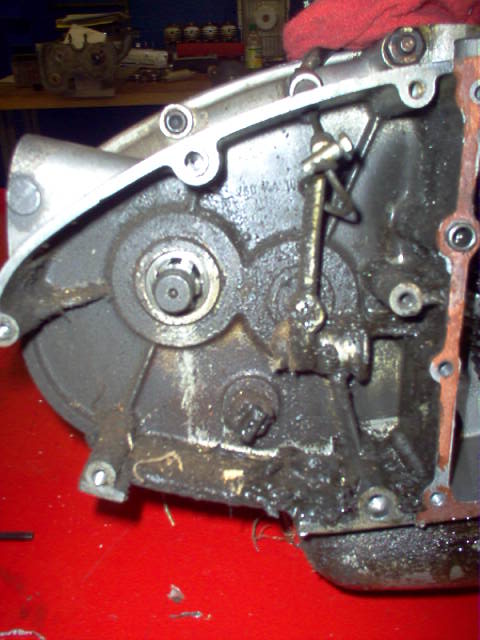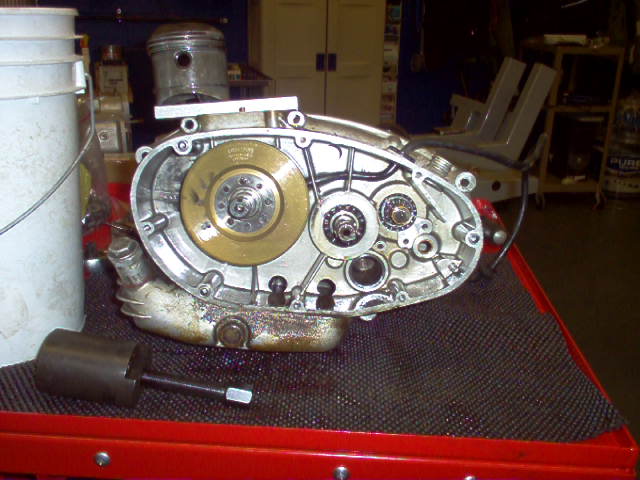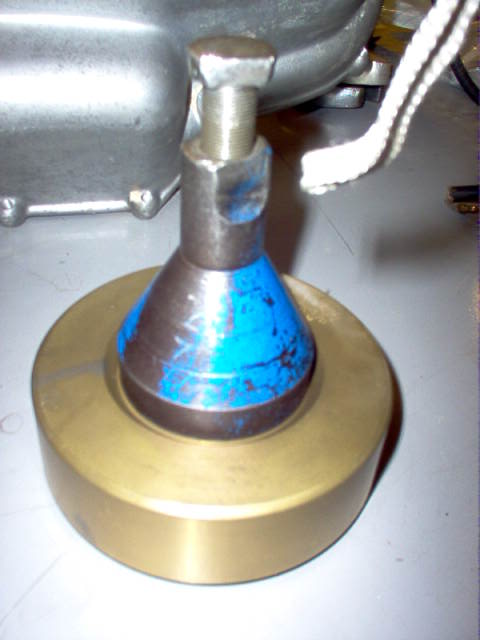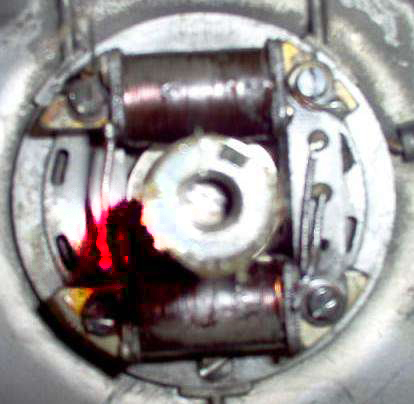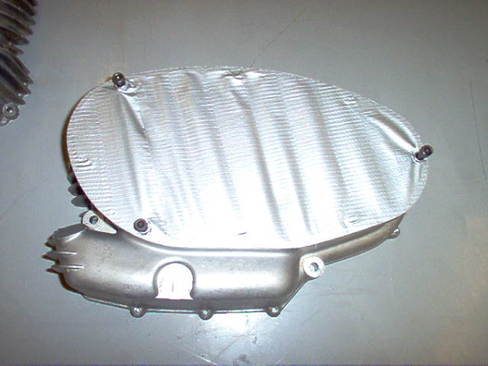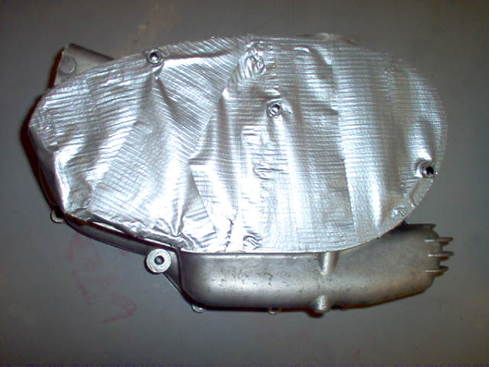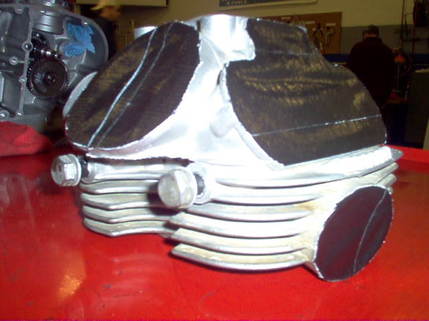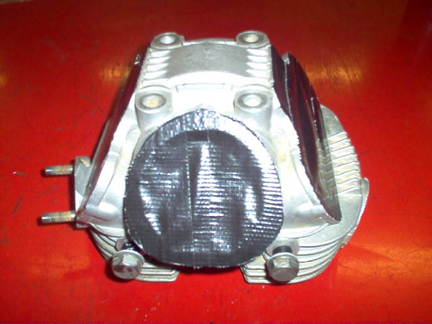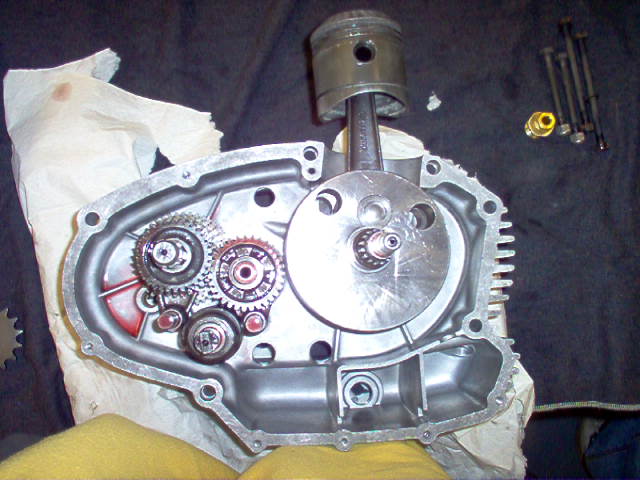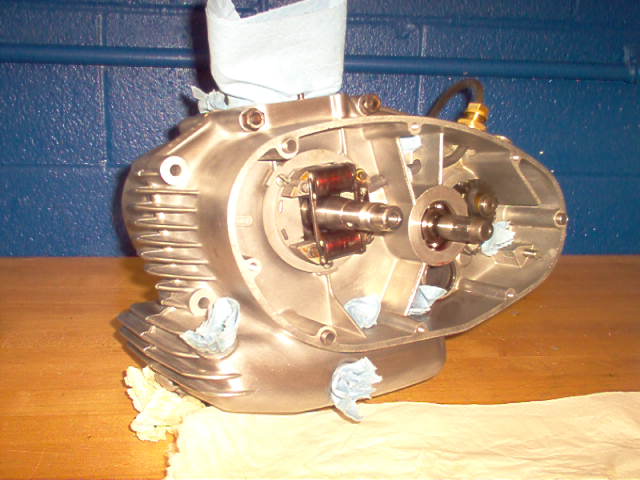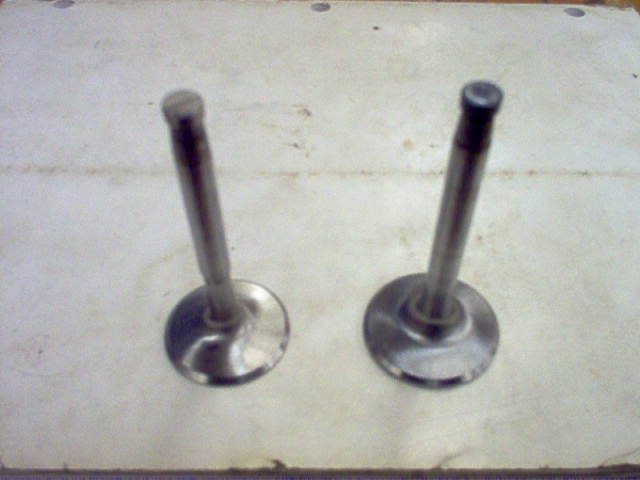1965 Ducati 250 Monza(Specs directly from shop manual omitting
unneeded information)
Engine
4 Stroke
Single-cylinder, inclined 10 degrees, made of light alloy,
deeply finned; special cast iron inserted
liner.
Cylinder head: made of light alloy; hemispherical combustion chamber; inserted valve seats.
Bore: 74mm
Stroke: 57.8mm
Cubic capacity: 248.589cc
Compression Ratio: 8:1
Timing: by O.H.C., valves inclined 80 degrees.
Max output RPM: 7200
Carburetor: Dell’Orto UBF 24 BS with quiet air inlet in the toolbox.
Cooling: by air.
Lubrication: forced- by gear pump. Oil sump in crankcase.
Transmission: from engine to gearbox, by gears; from gearbox to wheel, by chain with special cushion drive.
Gearbox: in unit with engine; 4 speeds; constant mesh gears; pedal control with pre-selector.
Clutch: multi plate type running in oil bath.
~ ~
Before we even started the disassembly procedure, we sat down and skimmed through the shop manual that we were given. This gave us an idea of how the disassembly procedure should go. We weren’t that lucky to be able to follow it directly step by step, so we ended up skipping around a little bit, as we didn’t have some of the special tools that were recommended in the manual. We were able to bypass most of the tools without a problem, except for the flywheel puller which ended up having to be ordered.
At the same time that we were working on the motor, in frames and suspensions lab, we brought the tires in, and broke them down off the wheels. For the tires and wheels being as old as they are, they were in pretty decent shape. The tires were discarded appropriately, as well as the inner tubes, which, one of the two were still intact (very surprising).
These were the measurements taken:
Original wheel size 19”
Spoke count 36
Rear Wheel measurements
Wheel off set 1.314” 1.330”
-measured from axle hub to edge with cushion drive rubbers
removed
Axle Runout .004”
Front Wheel measurements
Wheel off set (zero offset) .351” .368”
-measured from axle hub to edge
Axle Runout .001”
We looked up the information on replacing the wheels and spokes
at the same point due to their condition, as we needed the wheels and spokes in such a small time frame, we chose to replace them with new parts instead.
The original Ducati wheels before disassembly.
